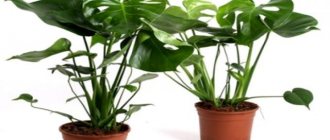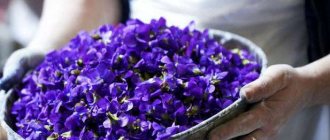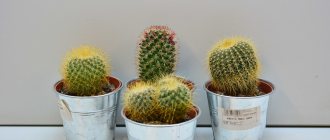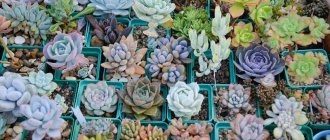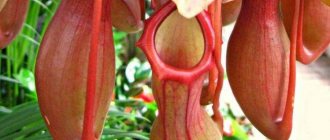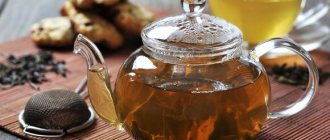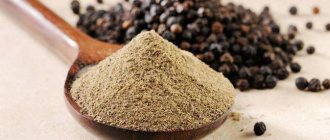Monstera is a beautiful flower native to the tropics, which is why it thrives in humid and hot climates. Some say that this is a terrible plant that harms a person and takes away his energy. Others argue that if you care for the plant, this flower will benefit the health of the owners, because it protects the owners from various poisonings and improves digestion. How dangerous is the plant? Monstera flower: influence on humans is the topic of this article. Let's try to figure it out thoroughly.
Benefits of monstera
Here are the main benefits of this indoor plant:
- Monstera at home saturates the air with oxygen and aerons.
- Absorbs negative impurities contained in the air and improves the microclimate of the room. Also, monstera leaves in the apartment retain dust particles, purifying the air.
- Suppresses the spread and development of viruses, as well as fungi and harmful microorganisms.
- Monstera in the house has the ability to predict the weather. Before the rain, drops of water appear on its petals. Some even call the flower a home weather forecaster.
- Many claim that this culture can save a person from various diseases. This is due to the released phytoncides (biologically active substances).
It is difficult to assess the benefits of the flower on households.
In conditions of poor ecology, these positive properties of monstera are very important. Improving the microclimate helps improve performance.
How to protect yourself from monstera: signs for those who are scared
Despite the fact that representatives of eastern civilizations attribute exceptionally good qualities to the flower, they also agree that the influence of this plant may be too strong. Especially if it grows indoors.
Therefore, in the East they figured out how to combine business with pleasure and grow a flower at home without any fears.
The rules are simple: to prevent the monstera from taking more energy from the house than is acceptable and useful, it must be kept in the same room with geraniums and begonias. It is also very good if a cat still lives in the apartment where the flower lives.
Possible harm
Monstera - why you can’t keep it at home and its effect on humans
The plant's harm to human health is not scientifically substantiated. Moreover, scientists have conducted research and proven that the plant is harmless if its leaves are not consumed.
There are many rumors and legends surrounding this flower.
Important! If monstera juice gets on the mucous membranes, it will lead to very unpleasant irritation.
Planting, replanting, pruning, support
When planting a plant, you need to pay attention to the soil. It should be loose and neutral. There are several mixture options:
- take one part each of humus, peat and sand and add 2 parts of turf;
- mix one part each of bark, leaf soil, peat, moss and ½ part coarse sand;
- Add coconut fiber or perlite to the purchased soil for Saintpaulia.
Young vines should be replanted annually, as they grow very quickly. The pot should be 2-3 cm larger than the old one. It is better if its height and diameter are approximately equal. In a cramped container, the leaves may turn brown and thin, like papyrus.
The soil, drainage material and container must first be sterilized. Drainage should occupy approximately a fifth of the volume.
The plant must be replanted carefully, along with a lump of earth. Dry damaged roots must be trimmed. The vine is placed in the middle of the new container, covered with earth and lightly compacted.
Adult vines are replanted after two years. You will need fairly large flowerpots. It will depend on them how large the vine will be. The new container should be larger than the old one so that the root system feels comfortable.
Since the plant is quite large, it is better to transplant it together. Make the transplant step by step.
Replanting a very large monstera is a difficult task, so over time, only the top old layer of soil is changed with the addition of humus. If you don’t want such problems, you can start a mini plant.
A young monstera definitely needs support, as it curls. In addition, the vine will look more attractive. It is placed in a permanent place and sprayed. For an adult plant, you can make the support yourself. Sticks with coconut fiber are not a very suitable option, as it is difficult for the vine to gain a foothold. To make a support, you can take a piece of plastic tube, longer than the plant, and drill many slots in it. Next, place it in a pot and pour sand inside to the surface of the soil. Moss mixed with peat should be poured on top. The support is wrapped with damp moss, a mesh with cells on top and secured with fishing line. This design also requires regular spraying. Other options are possible.
The plant grows aerial roots, but they cannot be removed. If a vine climbs up a moss tube, the roots will grow into it themselves.
When an adult plant stops growing intensively, you can cut off its top for rejuvenation. The cut should be sprinkled with coal. This procedure promotes the growth of side shoots and crown formation.
Signs associated with the plant
Monstera flower - home care
Here are the most popular negative signs associated with the flower:
- The plant “drives away” the betrothed. Many young ladies are sure that this flower takes happiness away from home and is the cause of their loneliness or problems in relationships.
- Monstera is bad for your career. People believe that it contributes to failure at work and prevents them from achieving their goals.
- Eating the flower can lead to death. This is the most common sign, which is absolutely not confirmed by anything. Monstera petals really shouldn’t be consumed so as not to irritate the mucous membranes, but the leaves definitely won’t lead to the development of diseases or even death.
The frightening appearance of a flower is the main reason for the appearance of negative signs.
But there are also good signs about the plant:
- Serves as a talisman. Many believe in the healing properties of the plant and claim that it promotes longevity and wards off bad luck from people.
- Maintains happiness in the home. In China, monstera is given as a gift at weddings and other family celebrations, as it is believed that it preserves happiness.
- Positive effect on people's concentration. An equally well-known sign is that Monstera develops concentration and composure among family members. This, in turn, improves performance.
As it turns out, there are good and bad signs around the flower. To believe in them or not is the decision of each person.
What does a monstera plant look like: photo
The name “monstera” in translation means “amazing” or “bizarre”. All three names can be easily explained by the appearance of the plant.
- The huge leathery leaves of this vine can reach 45 cm, and the slits and holes in them add even more mystery to the image of the monstera and give it a frightening appearance.
- With proper care, the length of the monstera reaches several meters, so when starting a monstera, try to provide the plant with reliable support.
- It has a developed system of aerial roots, with the help of which it climbs. It is not recommended to remove roots growing from the nodes of the main stem. You can direct them to the plant's pot or make separate bags of soil for each root. If there is a lack of soil, it will not climb.
- Monstera blooms annually, the flowers resemble a cob.
Important: With insufficient care, if you cannot provide the plant with comfortable climatic conditions, you may not see flowers.
- Monstera is a natural barometer. In cloudy weather, before rain, its leathery leaves become covered with moisture. The hydathoda organs located on the lateral veins are responsible for the secretion of this actually sticky juice. It is they who, when humidity is high, release liquid that flows from the wide leaves, as if the plant is “crying.”
Myths and reality
Monstera deliciosa - poisonous plant or not
There are several myths associated with the flower:
- Poisonous flower.
People believe that monstera poisons the air and therefore should not be kept at home. They believe that just 1 bite of a plant leaf can be fatal.
Scientists have indeed established that Monstera contains needle-like formations. And if there are small children in the apartment, then it is better for the owners to refuse to grow the plant at home. This is discussed in detail below.
- When night falls, the monstera absorbs a lot of oxygen.
Moreover, people believe that the flower pulls this substance out of the air in such quantities that the next morning may not come. Only illiterate people can believe in this myth.
For comparison, there have never been cases where someone died because of another person sleeping next to him, and he also breathes oxygen. In relation to this indoor plant, we can say - yes, at night plants absorb oxygen and release carbon dioxide, and during the day - vice versa. But at the same time, during photosynthesis during the daytime, this culture releases significantly more oxygen than it absorbs at night.
- Energetic vampire.
This is the most common myth about the flower. Many believe that it negatively affects a person’s health and steals his energy. This leads to the destruction of people's personal lives, destinies and careers. Most girls attribute bad luck in love to this flower.
It is impossible to argue with such a myth, because it is based on superstition.
Monstera is an energy vampire.
Important! Superstitious people should refuse to purchase a flower. Many in such cases attribute their failures to him.
Often the opposite effect occurs - after reading “horror stories”, people subconsciously begin to expect negativity, think about bad things, their mood deteriorates, and their heads begin to hurt. All ailments are immediately attributed to the flower.
Signs and superstitions
Monstera is often called a “crybaby” or a barometer. Before rain, air humidity rises and droplets of juice appear on the leaves of the vine - in the tropics this serves as a reliable sign of imminent precipitation.
Sometimes it is called a “vampire”, citing its ability to take energy: first the plant collects all the negativity, and then gets to the positive vibrations. However, it does not “drink”, but balances: it removes excess, normalizes, and brings it to an optimal state.
According to popular superstition, the monstera drives suitors away from girls and, as a result, its owner risks being left alone. There is no justification for this sign, but based on logic, it can be assumed that men with negative energy and dishonest intentions dare. A brave, sincere and loving person is unlikely to change plans because of a plant.
Its gloomy image was created by legends of travelers who found human skeletons in its roots. From the outside it seemed as if the monster had strangled the unfortunate man. However, the solution turned out to be simple: people in the jungle died from various causes (disease, thirst, wild animals, poisoned arrows, etc.), and the vine simply wrapped itself around them with stems and aerial roots.
Is the flower poisonous?
Beginning flower lovers are interested in whether Monstera is poisonous or not? It is often said on the Internet that if animals or people bite off part of it, it will lead to poisoning or even death. Scientists say: the monstera is poisonous, but it certainly will not lead to death.
In Australia and India it is even eaten. People grow Monstera and eat its “berries”. Therefore, you should be sure that the flower is harmless if all conditions for growing and caring for the plant are met.
Pests, diseases, possible problems - table
Diseases and pests rarely affect the vine, but sometimes they cause its death. The plant's leaves may curl, fall off, turn yellow, and dry out.
| Plant diseases | External signs | Fighting methods |
| Chlorosis (carried by aphids and mites) | Yellowing of leaves, appearance of light spots. | Processing with phytofarm. Feeding. Maintaining cleanliness. |
| Root rot | Yellowing and wilting of leaves. | Regulating the watering regime. Removing rotten roots and sprinkling the cuts with charcoal. |
| Spider mite | The appearance of yellow spots and spots on the leaf blades. Falling leaves. Presence of white cobwebs. | Treatment with phytoferm or derris. Regular shower with warm water. |
| Aphid | Curling, deformation and drying of young leaves. | Treatment with insecticide against aphids and preparations with permethrin. |
| Shchitovka | The appearance of hard brown plaques on the back of the leaves, drying of the tips. | Repeated treatment with a damp cloth with soapy water and insecticide. |
Monstera: is it possible to keep a flower at home?
In many ways, people's fears are caused by the rather frightening appearance of the plant (large dissected leaves resemble roots sticking out to the sides) and numerous myths. And its name clearly does not inspire confidence in people.
In daylight, Monstera looks harmonious in any home interior.
On the other hand, quite a lot of flower lovers keep the plant at home without even knowing about its bad reputation. In China, as mentioned above, they even give monstera to newlyweds. True, they probably call it differently.
Important! One thing you really can’t argue with is that there are needle-like formations inside the flower. If desired, they can be seen under a microscope. They can irritate the mucous membranes of living organisms and cause allergies.
If there are animals and/or a small child in the room, parents should consider whether it is possible to grow a monstera at home.
Possible difficulties of cultivation
Monstera can be affected by the following pests:
- Mealybugs form “cotton” lumps, which are most often located on the lower plate of the leaf or in its axils. The leaves of the affected plant turn yellow and growth stops. Monstera is isolated and treated with drugs against sucking pests every 4-5 days;
- Spider mites also live on the underside of leaves. Its presence is indicated by light green spots, which merge after a while, the leaf turns yellow and falls off. The drug Fitoverm is used for treatment. And for prevention, high humidity is necessary.
Important! Liana does not like frequent rearrangement and touching. Therefore, do not disturb her too often unless absolutely necessary.
If not properly cared for, the tropical beauty may experience the following problems:
- Losing leaves is a natural process, but if more leaves are lost than grown, then this is not normal. This may be caused by a lack of light or nutrition;
- Yellowing leaves indicate a lack of nutrition. Their decay is the result of waterlogging;
- if the leaf plate becomes brown and “papery” , then a larger container or higher humidity is needed;
- leaves turn pale from too much light;
- Stretching of the stem and shrinking of leaves causes a lack of lighting;
- A solid leaf plate without slits occurs when there is a lack of fertilizing or light.
Monstera is a very beautiful and unusual plant, rumors about the dangers of which are greatly exaggerated. Whether to place this pet in your home is your decision. If you decide to do this, you are unlikely to ever regret it.
What happens when placing Monstera in the bedroom?
As was said, scientists have proven the plant’s harmlessness, so it can be placed in the bedroom (as well as in any other room of the house). Bad superstitions are not supported by anything. And even the loudest myth that the monstera is an energy vampire is also unsubstantiated. This has never happened before, and it won’t happen in the future either.
But if from a biological point of view the flower is harmless, then with signs everything is extremely ambiguous.
It is impossible to answer what will happen when placing a monstera in the bedroom. Positive and negative signs are associated with the flower. Believing in them or not is everyone’s personal choice. One thing worth noting is that if people are constantly fixated on negative thoughts and failures, then they will blame the monstera for their misfortunes. On the other hand, many attribute positive changes in life to the influence of monstera.
If a person is shy, you should not place the monstera in the bedroom. People are afraid to wake up at night and see a huge shadow with large dissected leaves that resemble roots.
This cannot be denied; in the dark she looks terrifying.
Is it worth starting at home or not, is there any benefit from the flower?
Superstitions give the plant magical properties, and many bad omens are associated with it.
If you are inclined to believe in them, you should not have a monstera at home. It reacts sensitively to the emotional state of its owners and, in the presence of negativity, will not grow, even if you create conditions suitable for the flower. People who have monstera at home are ready to confirm that all superstitions associated with it are just fiction. On the contrary, the plant cleanses the air well from harmful impurities , so it is worth having for allergy sufferers and asthmatics. In addition, Monstera works as a natural humidifier, as its massive leaves release moisture.
If you want to improve the climate at home, Monstera will be an excellent helper. But it is especially loved for its exotic appearance, which is why interior designers often use the plant to decorate rooms. The flower fits perfectly into almost all modern interior styles, so even if you want to renovate, the plant will still look great in the updated room.
Where can you keep a flower?
There are other places in the house to place monstera. This vine-like flower reaches several meters in length, so you need to give it a lot of space.
Often a flower is placed at the front door. Many believe that this is how he maintains happiness.
You can also place it in the living room or kitchen. The most important thing is to protect children and animals from consuming flower leaves in order to avoid irritation and allergic reactions.
If the child in the house is very small, the plant should be fenced. You can be sure that it will not indirectly harm anything living in the house. That's what science says.
For reference: monstera propagation occurs by cuttings or cutting off leaves; if desired, you can easily increase the number of bushes.
Care and conditions for growing monstera
The plant is easy to care for, but to make it beautiful and pleasing to the eye, you need to follow simple rules.
Find out more about caring for and propagating monstera at home.
Where should it be in the house?
Monstera does not like direct sunlight, but prefers partial shade, so it is better to place it:
- on the windows (or under them) on the west or east side;
- on the north side the plant may lack lighting;
- on the south side the flower will need to be shaded from too bright light.
Microclimate
Monstera is a tropical resident, so you should consider:
- the warmer it is, the faster it grows. The average temperature in spring and autumn should be within +20...+25 °C, and in winter - not lower than +10 °C. The most optimal temperature is about +16…+19 °C;
- doesn't like drafts. They are especially dangerous in winter and autumn;
- tropical plant loves high humidity , so it requires regular spraying. You can wash the leaves with a wet sponge. For these purposes, you need to take settled warm water;
- diffused lighting guarantees large and beautiful leaves , and with a lack of light, the leaves will be small and the aerial roots will be thin.
Watering and fertilizing
It is advisable to adhere to seasonality when watering:
- from spring to autumn, abundant, but not fanatical watering is needed. The top layer of soil should dry out between waterings. Increased humidity of the substrate can cause loss of decorativeness and slow growth of leaves, as well as rotting of roots;
- in winter, watering is reduced , but the soil should not be too dry;
- water for irrigation should be settled and at room temperature.
Important! We should not forget that aerial roots, no matter how ugly they look, cannot be cut off. The vine needs them for support and nutrition.
Fertilizing is applied in summer and autumn. In winter, the plant does not need fertilizer. It is advisable to use both root and foliar feeding. Fertilizers are applied at least 2-3 times a month. As complex fertilizers, you can use “Epin” or “Humisol”, and as foliar fertilizers you can use Urea K-6.
Pruning and replanting
Pruning vines is needed in the following cases:
- when you need to form a young plant (the top is pinched off and sprinkled with ash);
- sanitary pruning to remove dry or diseased leaves and stems.
The timing and method of transplantation depend on the age of the monstera:
- The young flower grows quickly, so it needs to be replanted every 5-6 months. For this purpose, you can use transshipment with an old earthen lump. But such a transplant should be alternated with a complete replacement of the soil, as it is quickly depleted;
- adult representatives do not need frequent transplants, since their growth stops. The substrate and container are replaced as needed (every 3–5 years);
- for plants that are too large, only the top layer of soil is replaced. The old soil is removed with a shovel to the maximum possible depth and filled with new soil.
Find out how to properly transplant a monstera at home.
For replanting, you can purchase a ready-made soil mixture in the store, or prepare it yourself (mix peat, humus, sand and turf in a ratio of 1:1:1:3).
The liana grows quickly, so it needs to install a support about 1 meter high.
Impact on humans
How does the monstera flower affect a person? It is imperative to highlight the enrichment of air with useful substances and improvement of the microclimate. Now this is very important, since the air in cities is highly polluted. In addition, the plant absorbs harmful impurities and collects dust that could accumulate in the air.
Monstera also prevents the development of fungi and various viruses due to its properties. In addition, the flower releases substances that protect people from various diseases.
At the same time, folk signs and superstitions endow the monstera with negative properties. Whether or not to pay attention to such things is up to everyone to decide for themselves.
If a lover of indoor plants likes the appearance of a flower, and superstitions do not scare you, it may be worth buying it for your home. It will greatly benefit the whole family. But the plant has not been proven to have a negative effect, so you should not worry about this.
Where to put it in the apartment?
According to Feng Shui, monstera has a beneficial effect on the energy of space and helps to find peace. You can place a pot with a plant in the kitchen, hallway, living room or hallway. These rooms are best suited if you want to put your thoughts in order and achieve a state of harmony.
If you have an office at home, it will also be a suitable place for a monstera. While there, the flower will help you develop business skills and climb the career ladder. also recommended to keep the monstera in offices and near any workplace. This is an excellent plant for those who want to build a successful career and achieve financial well-being.
Perhaps the only place where you can’t put a monstera is the bedroom. It is believed that it cools marital relationships.
This is just a belief, but it’s not worth the risk when there are plenty of other suitable places to place the flower.
